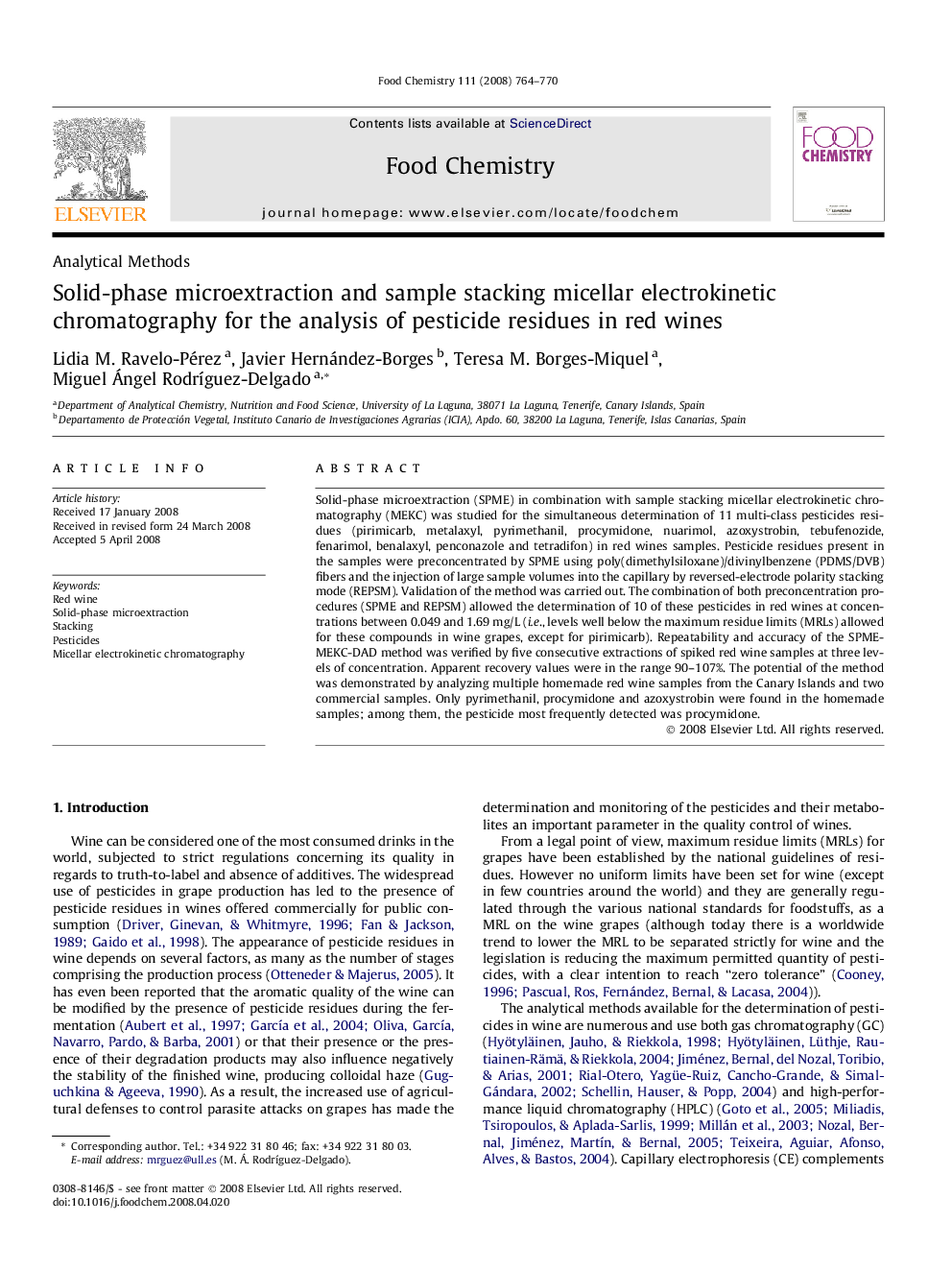| Article ID | Journal | Published Year | Pages | File Type |
|---|---|---|---|---|
| 1187946 | Food Chemistry | 2008 | 7 Pages |
Abstract
Solid-phase microextraction (SPME) in combination with sample stacking micellar electrokinetic chromatography (MEKC) was studied for the simultaneous determination of 11 multi-class pesticides residues (pirimicarb, metalaxyl, pyrimethanil, procymidone, nuarimol, azoxystrobin, tebufenozide, fenarimol, benalaxyl, penconazole and tetradifon) in red wines samples. Pesticide residues present in the samples were preconcentrated by SPME using poly(dimethylsiloxane)/divinylbenzene (PDMS/DVB) fibers and the injection of large sample volumes into the capillary by reversed-electrode polarity stacking mode (REPSM). Validation of the method was carried out. The combination of both preconcentration procedures (SPME and REPSM) allowed the determination of 10 of these pesticides in red wines at concentrations between 0.049 and 1.69Â mg/L (i.e., levels well below the maximum residue limits (MRLs) allowed for these compounds in wine grapes, except for pirimicarb). Repeatability and accuracy of the SPME-MEKC-DAD method was verified by five consecutive extractions of spiked red wine samples at three levels of concentration. Apparent recovery values were in the range 90-107%. The potential of the method was demonstrated by analyzing multiple homemade red wine samples from the Canary Islands and two commercial samples. Only pyrimethanil, procymidone and azoxystrobin were found in the homemade samples; among them, the pesticide most frequently detected was procymidone.
Keywords
Related Topics
Physical Sciences and Engineering
Chemistry
Analytical Chemistry
Authors
Lidia M. Ravelo-Pérez, Javier Hernández-Borges, Teresa M. Borges-Miquel, Miguel Ángel RodrÃguez-Delgado,
